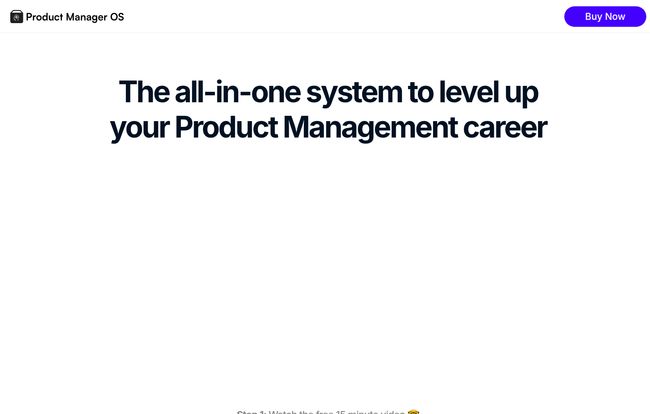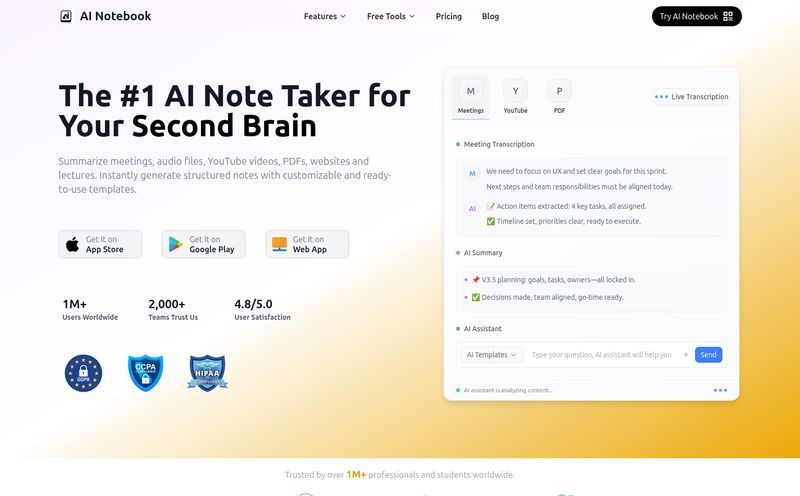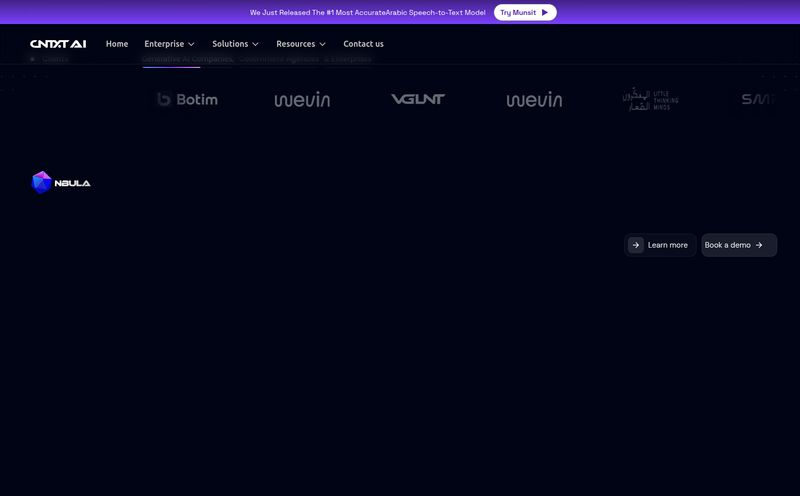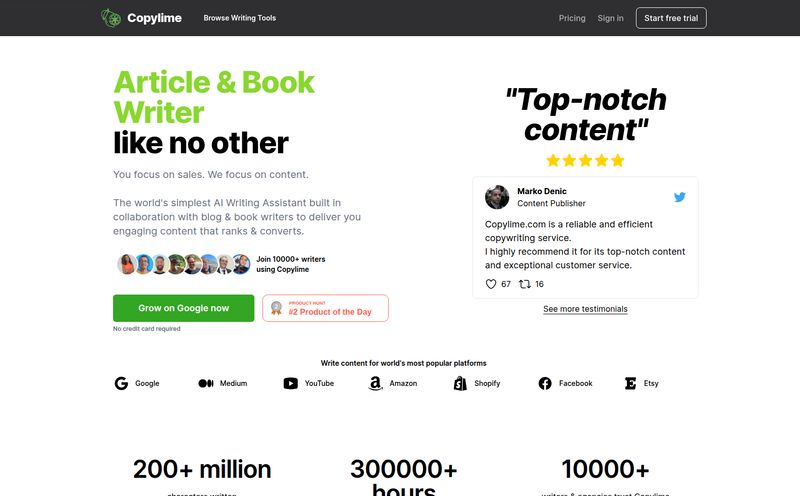The life of a Product Manager can feel like you're a professional plate-spinner at a circus that's on fire. You're juggling customer feedback, engineering timelines, stakeholder expectations, and a backlog that seems to reproduce on its own. For years, my "system" was a chaotic mix of Trello boards, Google Docs that hadn't been updated since the last ice age, and a constellation of sticky notes that threatened to take over my desk. It worked... until it didn't.
Then, I kept hearing whispers in some of my favorite Slack communities about this thing called Product Manager OS. Another tool, I thought. Great. Just what I need. But the praise was consistent, and the words "AI-assisted" and "all-in-one" made my SEO-tuned spidey-sense tingle. So, I took the plunge. And folks, I have some thoughts.
So, What Exactly is This Product Manager OS?
Imagine if someone took all the best practices from product management textbooks, combined them with the flexibility of Notion, and then sprinkled a little bit of AI magic on top. That’s Product Manager OS in a nutshell. It's not just another template; it’s a full-blown operating system for your entire product lifecycle. Created by a PM named Tom, who apparently spent two years refining it, it feels less like a corporate product and more like a battle-tested toolkit from someone who's actually been in the trenches.
It lives entirely inside Notion, which might make some of you groan, but hear me out. By building it on Notion, it becomes this incredibly interconnected and customizable hub. It’s like someone handed you the master blueprint to a spaceship... but for building products people actually want.

Visit Product Manager OS
Breaking Down the Toolkit’s Key Components
The system is divided into modules, each with its own explainer video (a very nice touch). It’s not just a collection of empty boxes; it’s a guided process.
The AI Assistant That's Actually a Helper
The headline feature is the AI-assisted product requirement generation. You plug in your hypothesis, some user pain points, and—poof—it helps you draft a solid Product Requirements Document (PRD). Now, is it going to write a perfect, ready-to-ship PRD with a single click? No, and you shouldn’t want it to. But what it does do is eliminate that dreaded "blank page" syndrome. It builds a fantastic scaffold for you to work from, saving, in my experience, a good few hours of initial grunt work. That’s more time for coffee and actually talking to users.
From Raw Ideas to Real Insights
My world is SEO and traffic, and it all starts with research. Product management is no different. The Product Manager OS has dedicated, structured spaces for Customer Discovery and Competitor Analysis. The templates guide you through creating user personas, documenting interview notes, and tracking your competitors' moves. It’s systematic. It stops vital info from getting lost in a random doc and forces you to be more intentional with your research. It’s the kind of organized approach I wish I had when I was first starting out.
Connecting Your Strategy to the Real World
An idea is worthless without execution. This system bridges that gap beautifully. It has modules for everything from high-level strategy (there are multiple templates for things like SWOT or OKRs) to the nitty-gritty of your Go-To-Market plan. You can map out your launch strategy, define your metrics, and then track progress all in one place. There are even frameworks for planning and documenting A/B tests. This interconnectedness is the secret sauce; your GTM plan is linked to your feature development, which is linked to your initial customer discovery. It creates a clear, traceable line from hypothesis to launch.
The Investment: What's the Damage?
Alright, let's talk money. In a world dominated by SaaS subscriptions that slowly bleed your budget dry ($15/month here, $25/month there), the pricing for Product Manager OS is a breath of fresh air.
"It's a one-time payment of $99. That's it."
That gets you the complete dashboard with all 20+ systems and, most importantly, lifetime access to all future updates. Given that Tom seems to be actively improving it, that's huge value. When I bought it, there was a discount code floating around, so it's always worth checking the site. A hundred bucks to reclaim hours of your time and organize your entire professional life? For me, that was a no-brainer. Compare that to the monthly cost of multiple other project management tools, and the math works out pretty fast.
The Good, The Bad, and The Things to Know
No tool is perfect, and I'm not here to sell you snake oil. The system is incredibly comprehensive, which is a massive pro. The one-time fee is a huge win. But there are a couple of things to keep in mind.
First, this system's greatest strength is also a potential constraint: it's built entirely on Notion. If you or your company are allergic to Notion, this isn't for you. It's as simple as that. Also, to get the most out of the AI features, you'll likely need a paid Notion plan that includes the Notion AI add-on, so that's a potential extra cost to factor in. Second, because it's so comprehensive, there's a little bit of a learning curve. You need to invest an hour or two to watch the videos and understand how all the databases connect. It's not plug-and-play in 5 minutes, but I'd argue anything worthwhile isn't.
My Final Verdict: Is Product Manager OS Worth It?
So, did it solve all my problems and bring about world peace? Not quite. But it did something almost as miraculous: it brought a sense of calm and order to the chaos of my product workflow. It's a framework that encourages best practices without being overly rigid.
If you're an aspiring PM, this is an incredible learning tool. If you're a junior PM, it'll make you look like you've been doing this for a decade. And if you're a seasoned pro like me, it's a brilliant way to systematize your own process and offload the mental burden of trying to hold everything in your head at once. It’s not a magic wand, but it’s a seriously powerful and well-thought-out system. For the one-time price, I'd say it's one of the best value-for-money investments a product person can make in their own sanity and career growth.
Frequently Asked Questions
1. Do I need to be a Notion expert to use this?
Not at all. You need basic familiarity, like how to click and type. The system comes with explainer videos for each module that show you exactly how to use it. If you've never used Notion, you might spend an extra 30 minutes learning the basics, but that's it.
2. Is the $99 price really a one-time fee?
Yes, as of my review, it's a one-time purchase. This gives you the full system and all future updates. Always check the official website for the most current pricing, but the one-time model is one of its biggest selling points.
3. How does the AI feature actually work? Do I need to pay extra?
The AI features are built using Notion AI. You provide inputs in the template, and it uses Notion's backend to generate drafts for things like PRDs. To use this, you will need to have the Notion AI add-on, which is a separate subscription from Notion itself. The OS works without it, but you'd miss out on the AI-assisted parts.
4. Can I customize the system?
Absolutely. That's the beauty of it being built on Notion. You can add, remove, or modify any part of the system to perfectly fit your team's workflow. You can change properties, tweak templates, and integrate it with other Notion pages you already use.
5. Is this useful for roles other than Product Manager?
I think so. While it's designed for PMs, many of the modules are super helpful for project managers, marketers, startup founders, or anyone involved in building and launching a product. The competitor analysis, GTM planning, and task management sections are pretty universal.
Final Thoughts
Taming the product management beast is a constant struggle. Tools can either add to the noise or create clarity. For me, Product Manager OS falls firmly in the second camp. It's a thoughtful, powerful, and fair-priced system that gives you a solid foundation to build on. It's a worthy co-pilot for any product journey.
References and Sources
- Notion Official Website
- (The official product page URL would be listed here if available)



